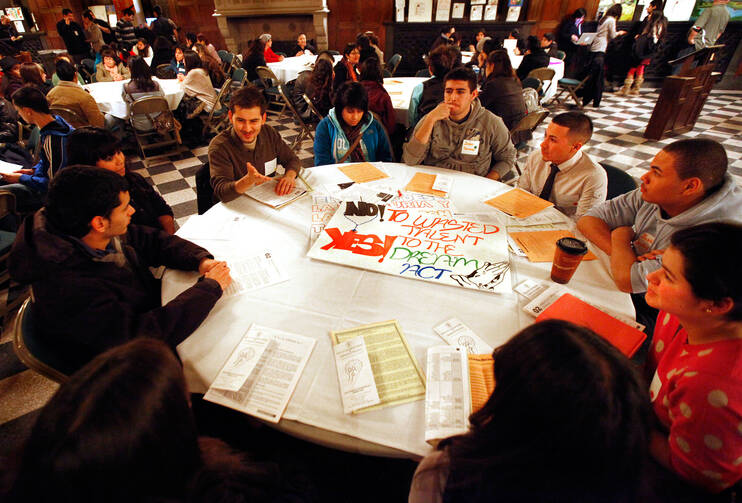President Obama’s recent proposal to pay tuition of many community college students thrusts the cost of college front and center again. It’s a popular topic as college acceptances draw attention nationwide, followed by the topic of how to pay for them.
Research reveals that Catholic colleges boast they keep costs down when they use student loans prudently. One reason is that graduates of Catholic colleges are more likely to complete a four-year degree in four years. Michael Galligan-Stierle, head of the Association of Catholic Colleges and Universities, says that “A key factor here is the higher proportion of students at Catholic institutions who earn their degree in just four years (45 percent vs. just 21 percent at public universities), saving an enormous amount of money in tuition and living cost. In fact,” he writes looking at one survey, “our four-year graduation rate beat the public college sector’s six-year graduation rate,” that stands at 40 percent.
With concern for college loans on the increase, some moral questions arise. What is a reasonable loan burden for a graduate to carry? Research shows that the average loan burden upon graduation is $26,000 and on the increase. Loans can reach into the six-figures. A burden of $150,000 for a loan for Harvard Law School might be reasonable if the Harvard law degree guarantees a $160,000 law salary. However, most law degrees will not guarantee such a salary upon graduation. This suggests that college advisers have a moral obligation to talk facts with would-be borrowers so they know how long it will take to pay back loans (a good average is ten years).
Overall, colleges also might consider ways to cut costs, which obviously stand as a way to lower debt. This includes more emphasis overall on two-year, community colleges, which cost less; living off campus, even at home instead of in a college dorm; cutting frills in college programs (even food platters at faculty meetings if they affect tuition costs, suggests Patricia McGuire, president of Trinity Washington University.)
College loans even effect vocation recruitment. There is an increase in the age of men and women entering religious orders. Few now enter religious orders right after high school. Orders that already stand financially strapped cannot afford to assume aspirants’ college loans when they accept them as members. The average priest ordained last year carried just over $20,000 in educational debt. For those who professed perpetual vows in religious life last year, the average amount of educational debt was just over $15,000. Some Catholic philanthropies, such as the Knights of Columbus, seek creative responses to make it easier for aspirants to pursue religious vocations.
Money is not the only thing to consider in decision-making. Certainly where a student goes to school can (but does not guarantee) influence over choice of a marriage partner and friends who live in line with particular religious and social beliefs.
And sometimes high tuition is worth it. Some noble, low-income fields, including education and social services, need well-qualified staff, and that may mean high tuition.
But students (like their parents) still need guidance on not spending beyond their means. Recruiters need to draw as many students as possible, of course, but the important moral question of how much tuition debt is justified cannot be dismissed by Catholic colleges, especially by their admissions and financial aid counselors.








